Chapli Kabab is like a spicy, flattened meat patty that comes from Pakistan and Afghanistan. It’s made by mixing ground meat with Pakistani spices, cooked until they’re crispy on the outside, and they’re usually served with naan, mint chutney and salad.
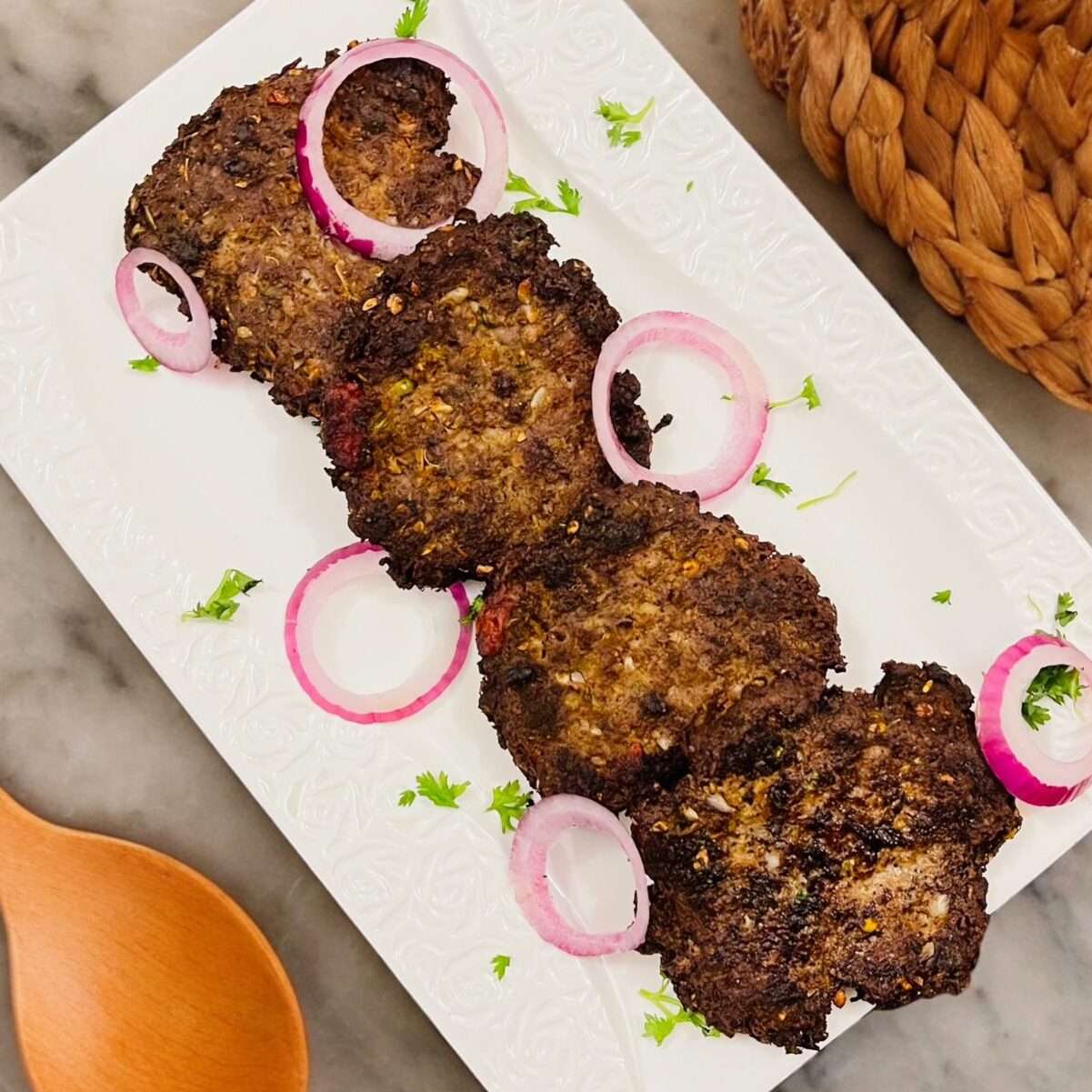
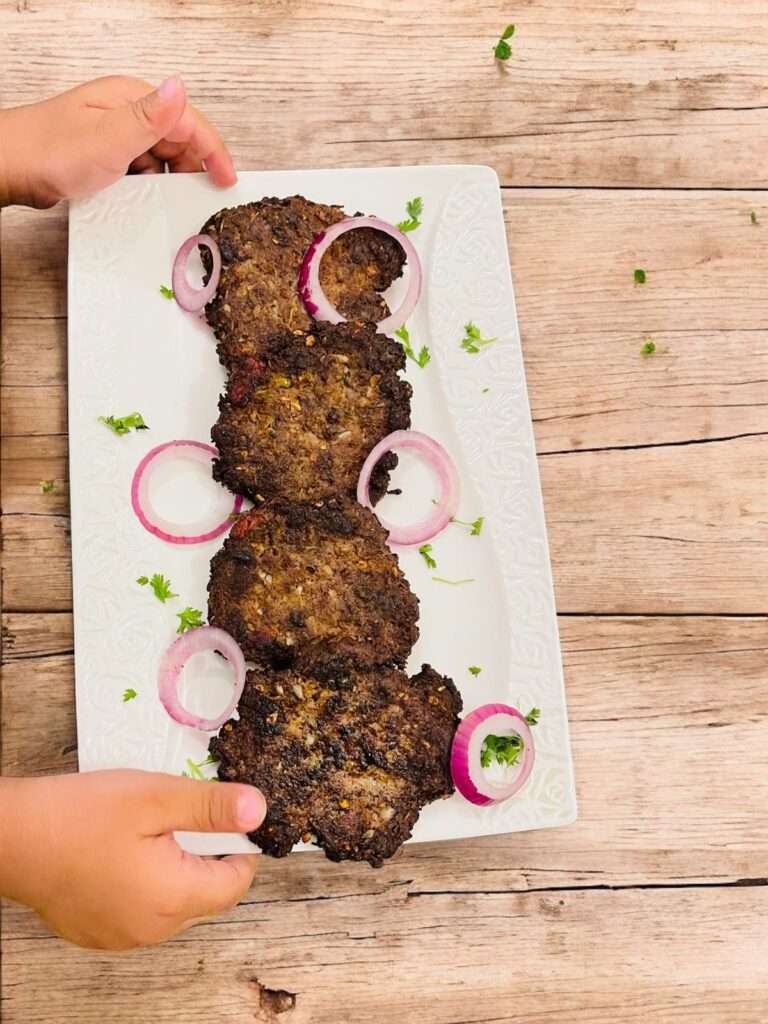
Trust me, this Chapli Kabab recipe is incredibly delicious, my toddler loves it! Every time I make these Kabab, they can’t resist coming back for more. Just the other day, while I was trying to take a photograph of the dish, my little one rushed over to grab it lol. It’s that good!
About The Recipe
Chapli Kabab is a popular dish originating from the region of Khyber Pakhtunkhwa in Pakistan and Afghanistan. It is a flavorful minced meat patty that is typically made with ground beef, mixed with a variety of spices such as coriander, cumin, dried pomegranate seeds, carom seeds, garlic, ginger, and chili peppers. In addition to the spices, other ingredients like tomatoes, onions, and fresh herbs are included to enhance the flavor.
The meat mixture is shaped into flat, round patties that are larger and thinner compared to traditional kababs. These patties are then either deep-fried or grilled, resulting in a crispy exterior and juicy, flavorful interior. The distinctive charred and crispy texture of Chapli Kababs sets them apart from other types of kababs.
Chapli Kabab is often served with naan or Afghan bread, along with yogurt sauce (raita), fresh salad, and sometimes pickles or chutney. They are a popular street food not just in Khyber Pakhtunkhwa, but all over Pakistan, enjoyed for their bold and aromatic flavors.
Explore More Kabab Recipes
Chicken Seekh Kabab
Shami Kabab
Pakistani Seekh Kabab
How To Make Chapli Kabab (Stepwise Pictures)
- Start by mincing the meat using a mincer or use ready-made keema (ground beef). Ensure to drain all excess water from the minced meat because it shouldn’t be watery. The ideal fat to meat ratio should be 80:20 for a juicy and flavorful result.
- Next, in a pan, roast cumin seeds, coriander seeds, and peppercorns until fragrant. Then, in a coffee grinder, combine dried pomegranate seeds and the roasted seeds to a coarse consistency.
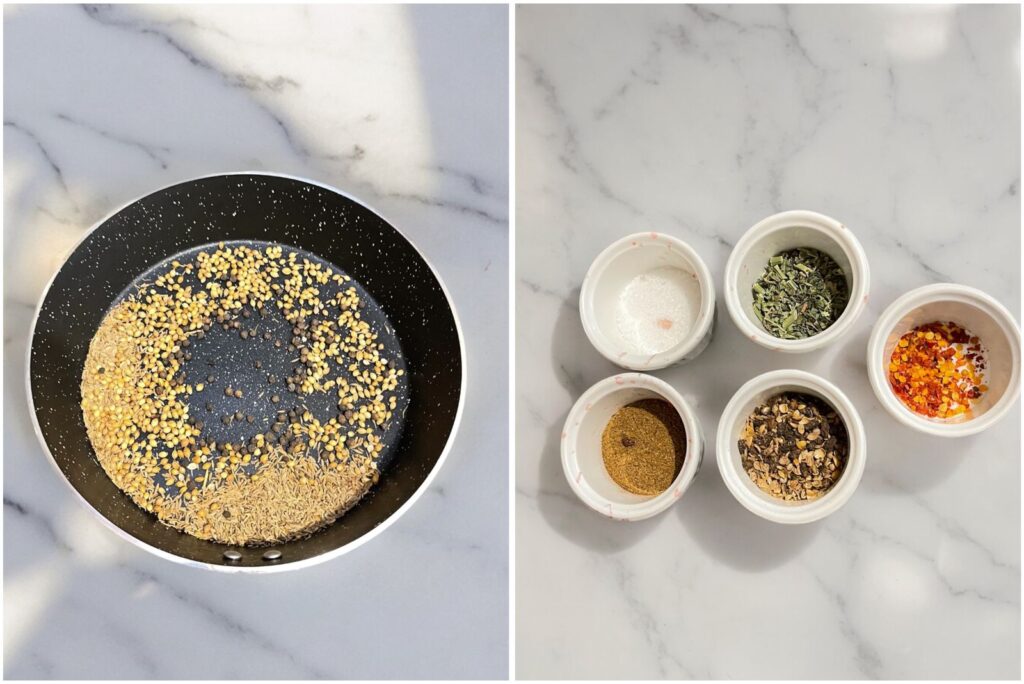
- Dry roast cornflour in a pan over low to medium heat and set it aside for later use.
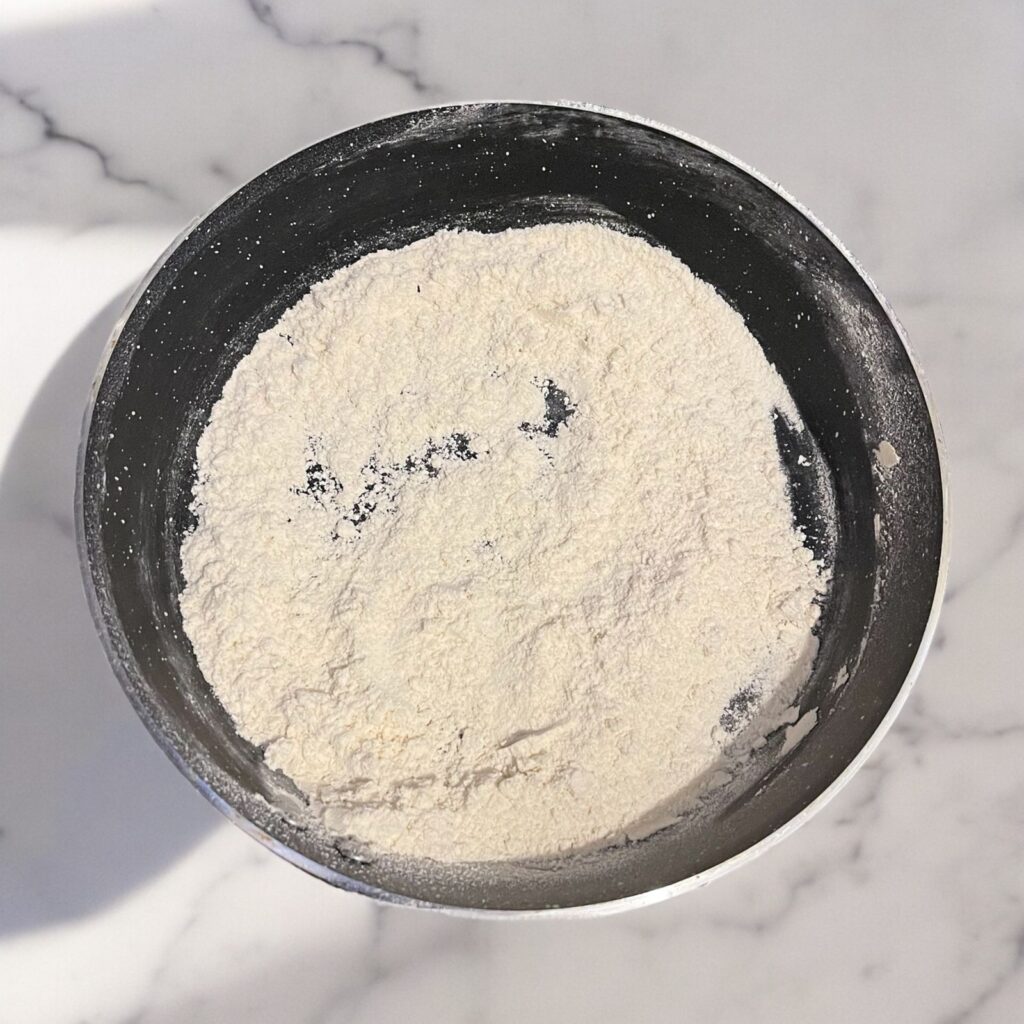
- Chop onion, green chilies, cilantro, mint leaves, garlic cloves, and ginger finely in a chopper. Strain any excess water from these vegetables to ensure they are dry.
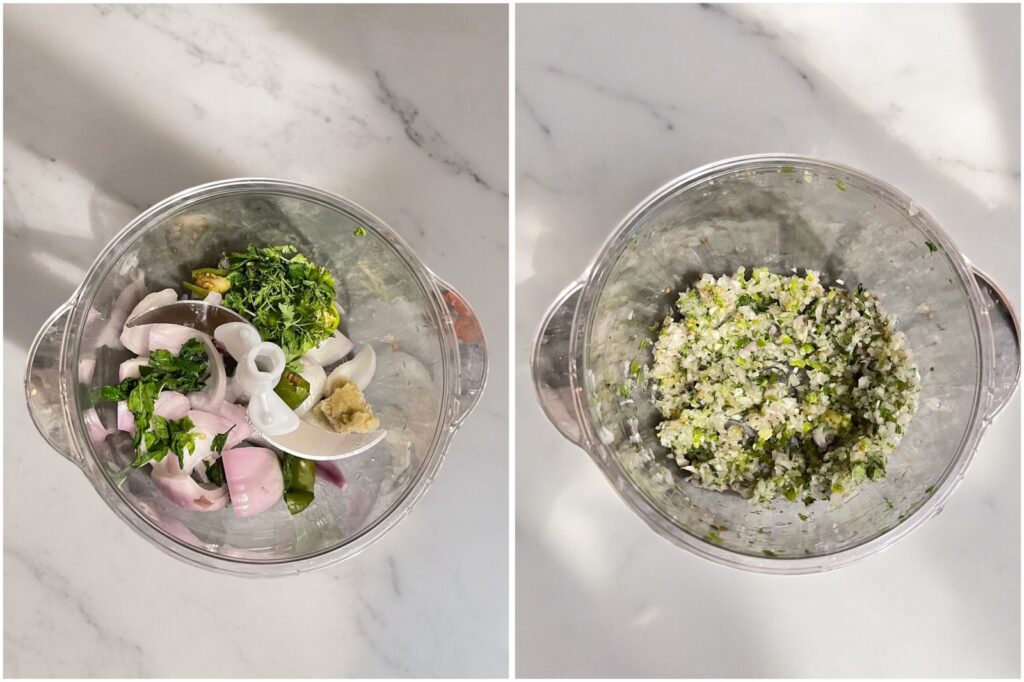
- In a bowl, mix ground beef with cornflour and then add all the spices, salt, the mixed roasted spices, red chili flakes, carom seeds, dried fenugreek seeds, and garam masala powder. Knead the mixture well to form a dough-like consistency and then add an egg.
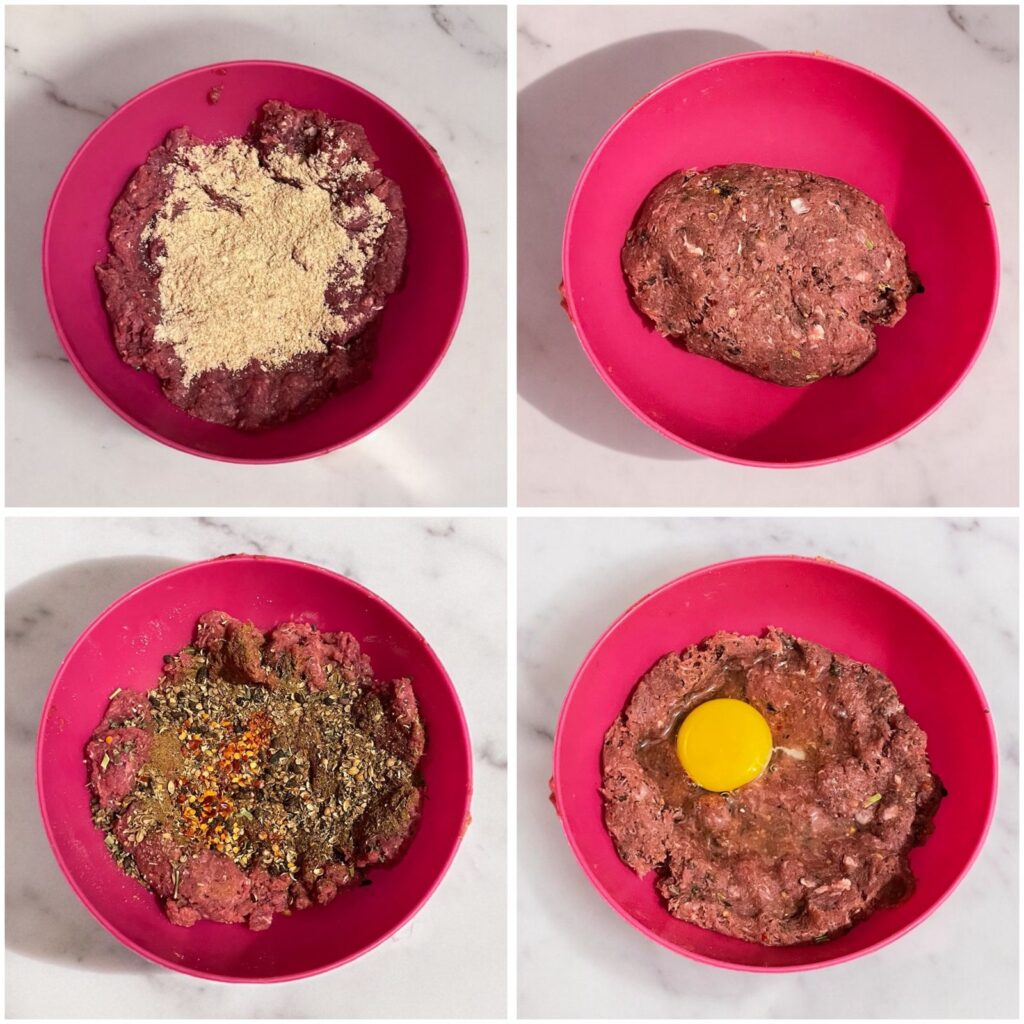
- Once a fine dough is formed, add the chopped vegetables and mix gently. Finish by adding lemon juice and tomatoes, kneading the mixture to form a smooth dough. Refrigerate the mixture for 20-30 minutes.
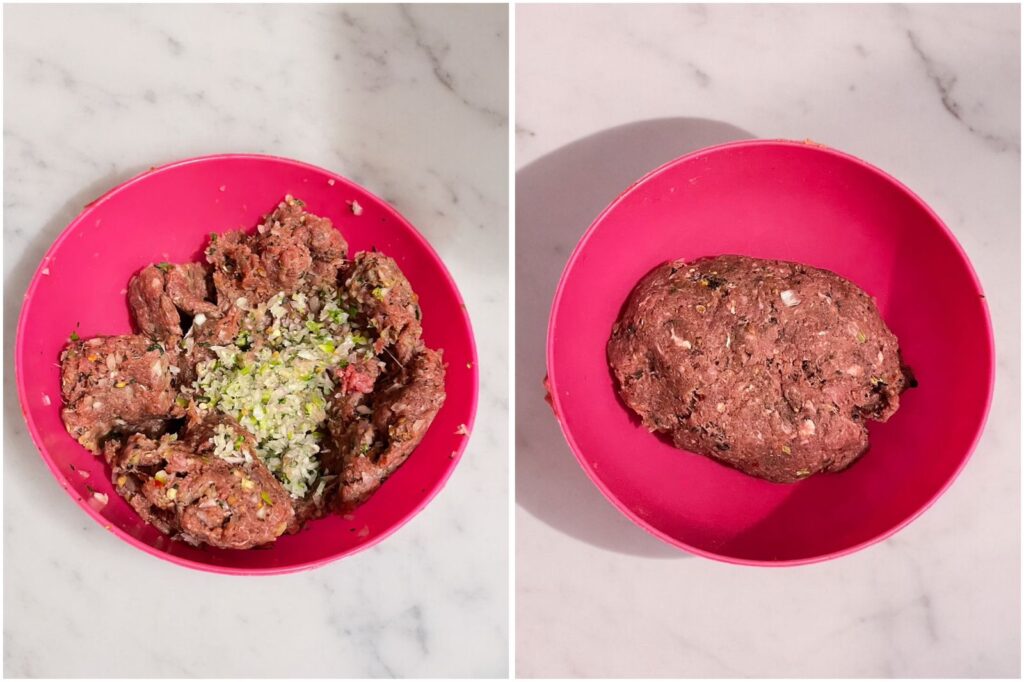
- Heat oil in a pan. Take a small ball shaped portion of the mixture and shape it into a uniform patty. Fry the patties in the pan for about 4-5 minutes on each side.
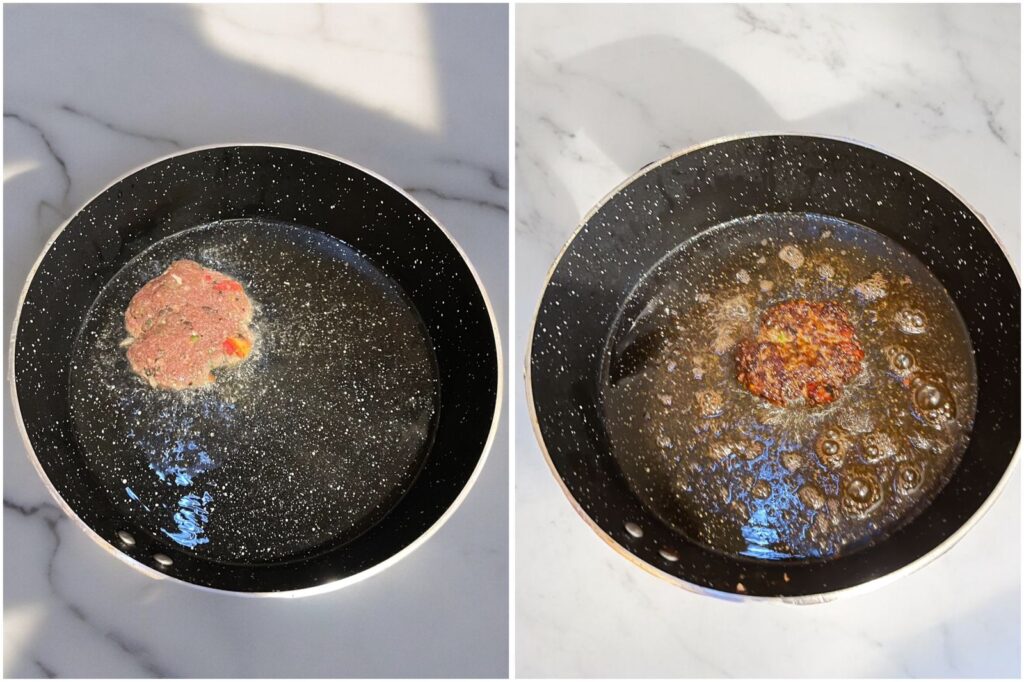
- Serve the Chapli Kababs hot with any mint chutney or side dish of your choice. Enjoy your flavorful and homemade Chapli Kababs!
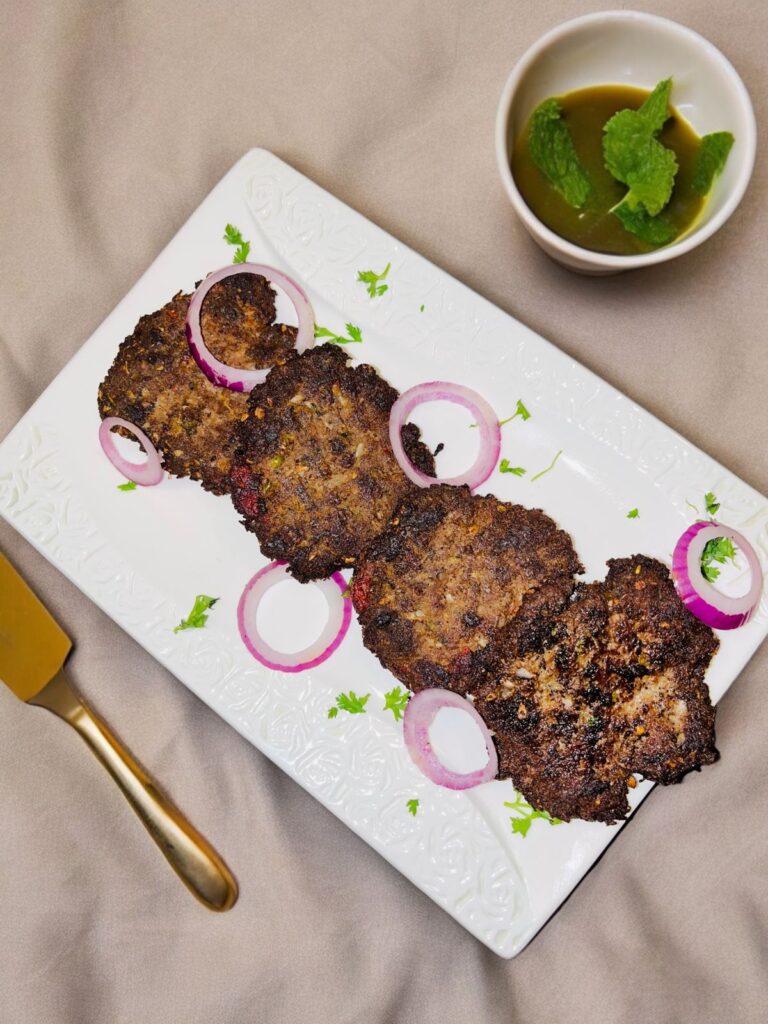
Binding Agent Substitutes
You have the flexibility to choose any of the options. Cornflour, Besan (chickpea flour), or Wheat Flour—as they all serve as effective binding agents in the recipe.
Whether you opt for Corn-flour to absorb excess moisture, Besan to add flavor and texture, or Wheat Flour for structural support, each of these ingredients can help bind the Kabab mixture together.
Pro Tips To Make Juicy Kabab
- When making Chapli Kababs, aim for meat with an 80:20 ratio of meat to fat. This means 80% lean meat and 20% fat. The fat helps add flavor and juiciness to the kabab.
- Roast the spices and binding agent in a dry pan over a low heat. By roasting the spices and binding agent, you’re essentially waking them up and making them more flavorful before adding them to your Chapli Kabab mixture. It gives your Kabab an extra flavourful taste.
- When including tomatoes in your kabab mixture, it’s best to add them towards the end of the preparation process. This way, you avoid putting too much liquid from the tomatoes into the mixture, which could make your kababs too wet and less tasty.
- After you’ve mixed all the ingredients for your Chapli Kababs together, the next step is to knead the mixture until it’s smooth. Make sure everything is mixed well and there are no lumps or uneven bits, before shaping it into kababs for the best results.
- Before using the meat and vegetables in the kabab mixture, make sure they are dried properly. Excess moisture can lead to soggy kababs. Pat the meat dry with paper towels and ensure vegetables (onion, tomatoes) added are also free from excess moisture before mixing them with the other ingredients. You can keep them under the sun before adding them to the meat.
- Use finely ground meat in Chapli Kabab, as it helps the kababs hold together better and cook evenly. The fine texture allows the meat to absorb the flavors and spices more effectively.
Tips To Prevent Them From Breaking
- Shape the Kabab carefully and evenly. Ensure that they have a consistent thickness throughout. This helps in cooking them evenly and is less likely to break apart while cooking.
- Using biding agent helps to keep the kababs moist and stick together. These ingredients work like glue to hold the meat and spices in the kababs tightly, so they don’t fall apart while cooking and stay juicy inside.
- Give your Chapli Kababs a little rest in the fridge before cooking. It helps the kababs hold their shape better when you cook them. It’s like when you put gel in your hair to make sure it stays styled (lol), chilling the kababs helps them to firm up and makes them less likely to fall apart while they are cooking.
Frying Techniques
You can cook Chapli Kabab using any method you like – whether it’s deep or shallow frying them in a pan, grilling them, baking them in the oven, or using an air fryer. It’s all up to you and what you prefer or have available. Pan frying gives a crispy outside and juicy inside, grilling adds a smoky flavor, baking cooks them evenly with a softer texture, and air frying offers a healthier option with a crispy finish. So, choose the method that suits your taste and how you like to cook!
- Pan Frying: To pan fry Chapli Kababs, heat a pan on medium-high heat, add oil, and let it heat up. Place the kababs in the pan without overcrowding and cook until golden brown on one side (4-6 minutes). Fylip them over and continue cooking, ensuring they are cooked through.
- Grilling: To grill Chapli Kababs, preheat the grill to a medium-high temperature. Brush the kababs with oil, place them on the grill grates with enough space between them for even cooking. Grill for a few minutes on each side (5-7 minutes), turning carefully for grill marks and even cooking.
- Baking: To bake Chapli Kababs, start by preheating your oven to 375°F. Put the kababs on a baking sheet or in a baking dish lined with parchment paper. Bake them in the oven for about 20-30 minutes until they are fully cooked and have a nice brown color. Flip them halfway through baking to ensure they brown evenly.
- Air Frying: Start by preheating your air fryer. Place the kababs in the air fryer basket in a single layer, leaving space between them for even cooking. Lightly spray or brush them with oil to help them get crispy. Cook the kababs in the air fryer for about 10-15 minutes, following the recommended temperature.
Frequently Asked Questions
[sp_easyaccordion id=”3612″]
Chapli Kabab | Peshawari Kabab
Course: AppetizersCuisine: Pakistani6
servings15
minutes20
minutes250
kcal35
minutesChapli Kabab, a traditional Pakistani dish made with finely ground meat, aromatic spices, and other ingredients like tomatoes and onions. Create these homemade delicious and juicy beef patties.
Ingredients
500 grams ground beef, 80:20
1 large onion, finely chopped
2 small tomatoes, finely chopped without seeds
3-5 green chillies, finely chopped
1/4 cup cilantro, finely chopped
1/4 cup mint leaves, finely chopped
5-7 garlic cloves, minced
1 inch ginger, minced
1 tablespoon lemon juice
1/2 cup oil, for frying
1.5 teaspoons salt (or to taste)
1 teaspoon chili flakes
1 teaspoon garam masala powder
1/2 teaspoon carom seeds
1.5 teaspoon dried fenugreek seeds
2 tablespoon coriander seeds
2 tablespoon cumin seeds
2 tablespoons dried pomegranate seeds
1 tablespoon black peppercorns
1/2 cup cornflour, roasted
1 egg
Directions
- When making Chapli Kababs, aim for meat with an 80:20 ratio of meat to fat. This means 80% lean meat and 20% fat. The fat helps add flavor and juiciness to the kabab.
- Roast the spices and binding agent in a dry pan over a low heat. By roasting the spices and binding agent, you’re essentially waking them up and making them more flavorful before adding them to your Chapli Kabab mixture. It gives your Kabab an extra flavourful taste.
- When including tomatoes in your kabab mixture, it’s best to add them towards the end of the preparation process. This way, you avoid putting too much liquid from the tomatoes into the mixture, which could make your kababs too wet and less tasty.
- After you’ve mixed all the ingredients for your Chapli Kababs together, the next step is to knead the mixture until it’s smooth. Make sure everything is mixed well and there are no lumps or uneven bits, before shaping it into kababs for the best results.
- Before using the meat and vegetables in the kabab mixture, make sure they are dried properly. Excess moisture can lead to soggy kababs. Pat the meat dry with paper towels and ensure vegetables (onion, tomatoes) added are also free from excess moisture before mixing them with the other ingredients. You can keep them under the sun before adding them to the meat.
- Use finely ground meat in Chapli Kabab, as it helps the kababs hold together better and cook evenly. The fine texture allows the meat to absorb the flavors and spices more effectively.
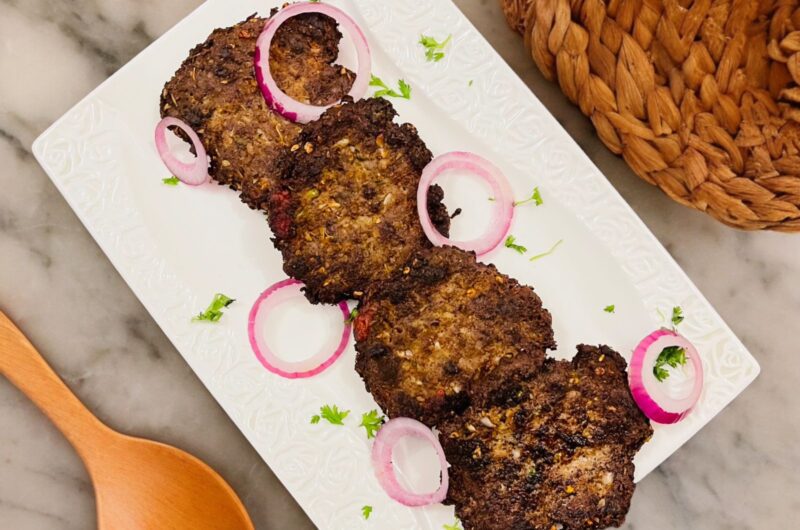

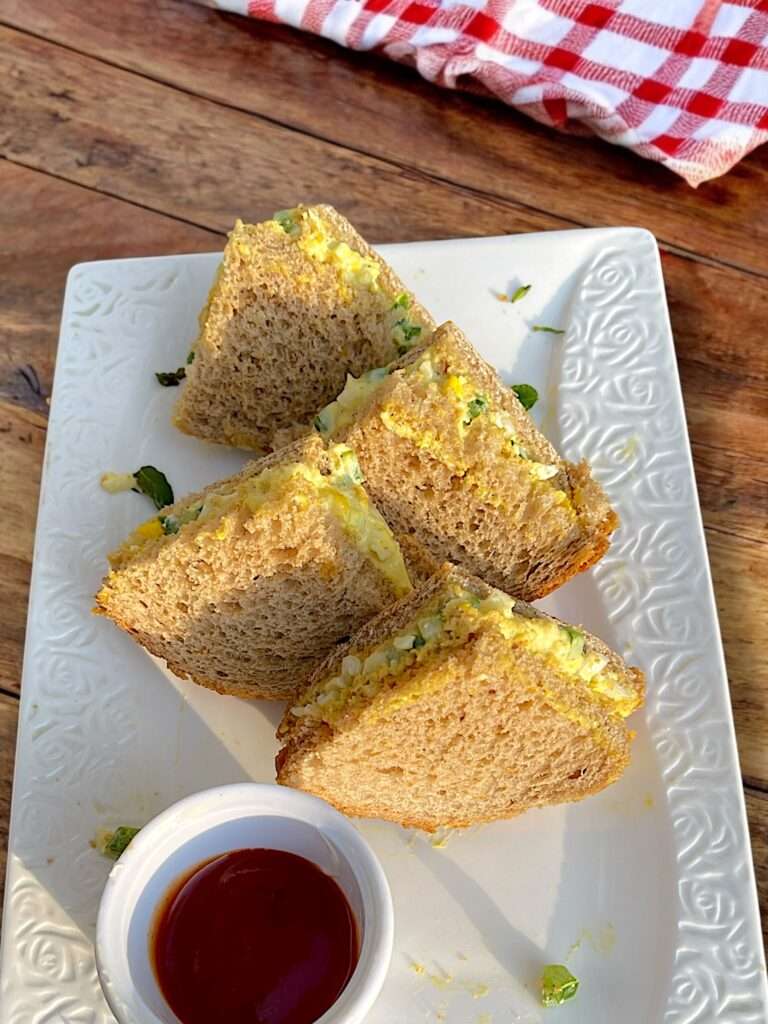
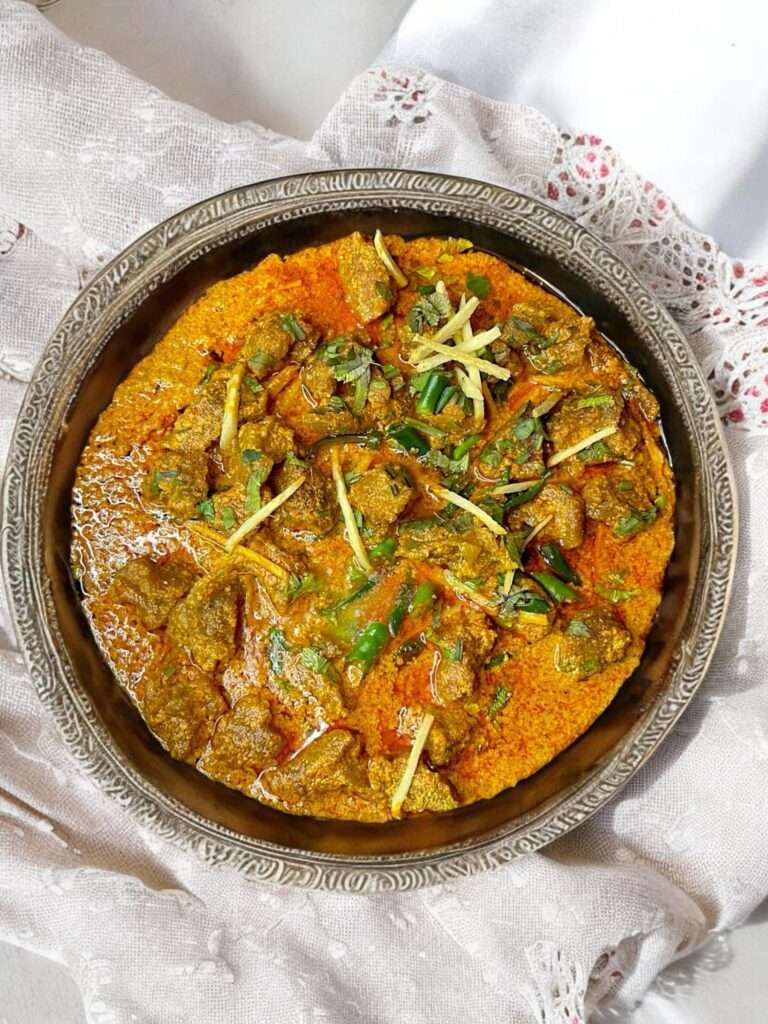
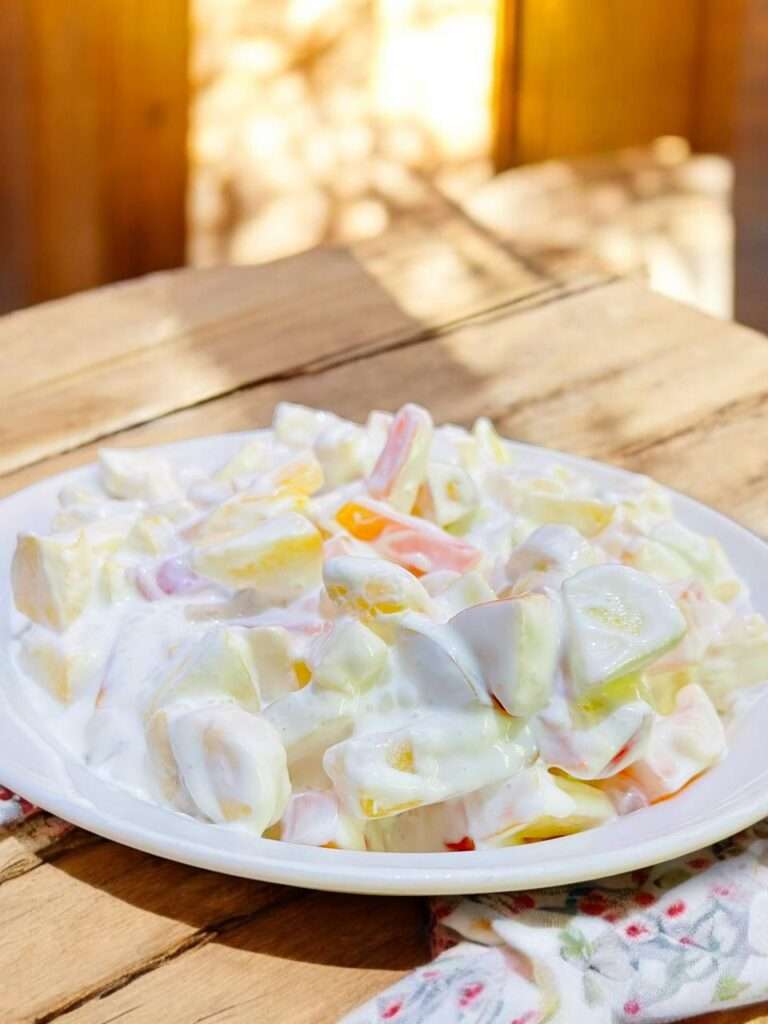
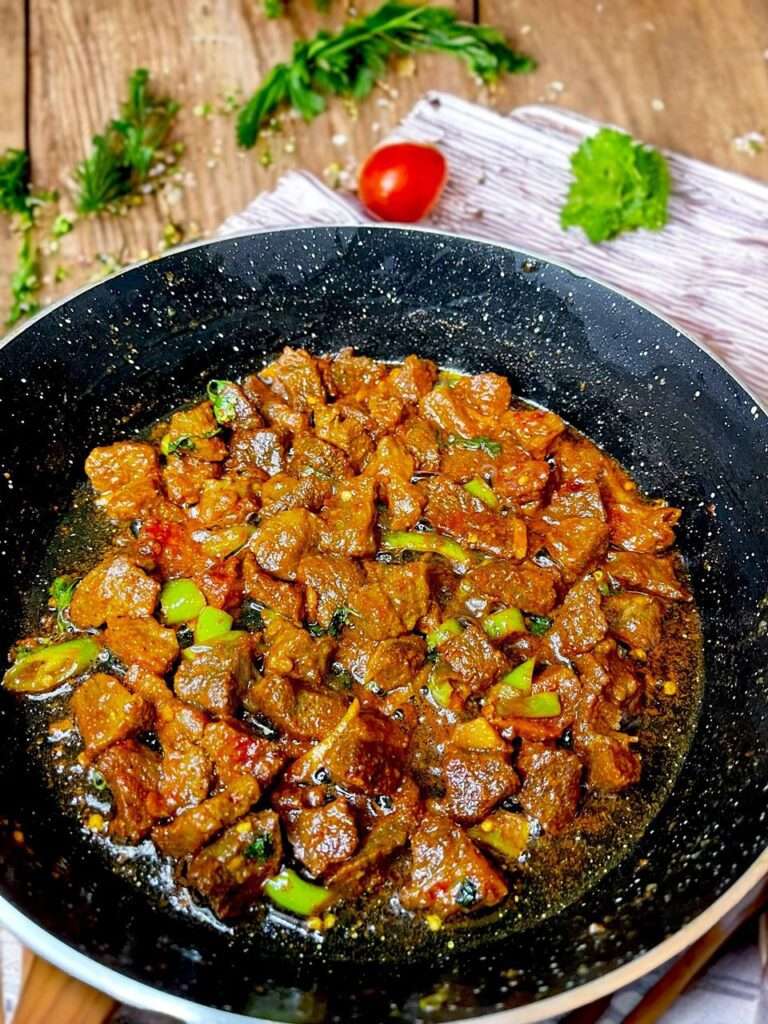
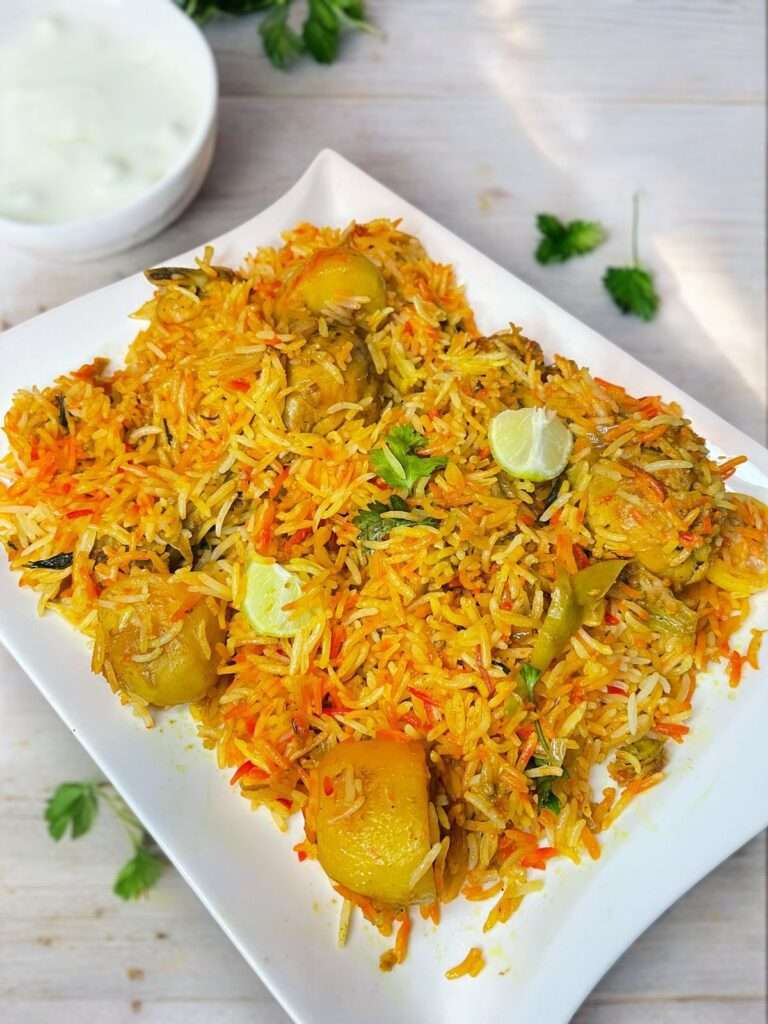
wow, I must try with cornflour its new to me …
great job
Love love loveee your recipes ❤️
Thank you!:)
Your recipes are amazing
Thank you!:)
As always amazing recipe♥️
These are perfect to try at home !
These are perfect to try at home !